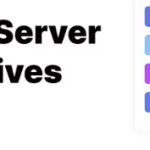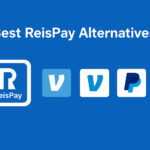In this piece, i will cover the How to Stake Solana (SOL) Safely Using a Hardware Wallet to keep your crypto assets secure.
We will provide you with step by step instruction on how to get a hardware wallet, how to move your SOL tokens to it, and how to chose a validator that will provide you with the most profit from staking while keeping your tokens safe.
What is Solana (SOL)?
Solana (SOL) is a powerhouse blockchain platform, purpose-built for cryptocurrencies and dApps.
Its unique feature of Proof of History (PoH) consensus allows Solana to burn through thousands of low-cost transactions every second, presenting it as a highly competitive option for both developers and users.

Solana bolsters its rank in the world crypto market as a major blockchain player as it is home to numerous projects such as DeFi (Decentralized Finance) and NFTs (Non-Fungible Tokens).
The SOL token can be employed for staking, governance, transaction fees, and other activities within the blockchain network.
How to Stake Solana (SOL) Safely Using a Hardware Wallet

Step 1: Set Up Your Hardware Wallet
- Purchase a hardware wallet (e.g., Ledger Nano S/X or Trezor with Solana support).
- Initialize the device: Follow the setup instructions, write down your recovery phrase, and store it offline.
- Install the Solana app via Ledger Live (for Ledger) or a third-party interface (for Trezor).
Step 2: Connect to a Solana Wallet Interface
- Use a Solana-compatible wallet that integrates with hardware devices, such as:
- Phantom Wallet (browser extension/mobile)
- Solflare (web/mobile)
- Connect your hardware wallet to the interface (e.g., in Phantom, select “Connect Hardware Wallet”).
Step 3: Transfer SOL to Your Hardware Wallet
- Generate a Solana address via your hardware wallet.
- Send SOL from your exchange or current wallet to this address.
- Always double-check the address before confirming!
Step 4: Choose a Validator
Research validators using tools like Solana Beach or Staking Rewards. Prioritize:
- High uptime (≥99%)
- Low commission fees (ideally 0–5%)
- Reputable identity (avoid anonymous validators).
Example Validators: Figment, Chorus One, or Stakewiz.
Step 5: Delegate Your SOL
- In your wallet (e.g., Phantom), go to the “Stake” section.
- Click “Start Earning” and select “Delegate Stake.”
- Paste your validator’s address or choose from the list.
- Enter the amount of SOL to stake (leave ~0.01 SOL for fees).
- Confirm the transaction on your hardware wallet (verify details on the device screen).
Step 6: Monitor Rewards
- Rewards accrue every epoch (~2-3 days) and auto-compound.
- Track progress in your wallet or via explorers like Solscan.
- Re-stake rewards: Delegate earned SOL to maximize returns.
Step 7: Unstaking (When Needed)
- Navigate to “Stake Accounts” in your wallet.
- Select “Deactivate Stake” and confirm via your hardware wallet.
- Wait 2-3 days (1 epoch) for SOL to become withdrawable.
Security Best Practices
Use bookmarked links for wallets/validators to avoid phishing.
Never share your recovery phrase or private keys.
Verify validator addresses to avoid scams.
Update firmware regularly on your hardware wallet.
Why Use a Hardware Wallet for Staking?
Maximum Security: While staking users are more vulnerable to hacking, offline wallets allow users to store their private keys offline. This makes them highly secure versus online wallets that are more susceptible to hack attacks and malware.
Ownership and Control: Users issues their tokens and possesses complete control over them. This ownership reduces the chances of owning compromised exchange accounts that are custodial thus losing tokens.
Lower Phishing Risk: Hardware wallets provide protection against phishing attacks using unique transactions that need physical confirmation.
Anxiety Reduction: There is alleviated concern when, storing assets offline, especially while staking huge sums of cryptocurrency.
Wider Application: A number of hardware wallets such as Trezor and Ledger allow users’ to stake of multiple cryptocurrencies like Solana.
Managing Staked Solana
Keep a Tab on Your Validator’s Performance: Always make sure to check up on your chosen validator’s performance. Make sure they are disbursing appropriate rewards while having high uptime. If a validator’s performance drops, you can switch to one with a better performance rating.
Consider Adding Onto Your Earnings: You can take your earnings from staking and use them as re-investment to earn even more. Doing this at the right times can prove to be extremely effective.
Use More than One Validator: In order to not put all your assets in one basket, have your stakes split among more than one validator and do your part in helping decentralize the network. By doing this, you reduce the dependency on a single validator’s performance.
Stay Active: It is always good practice to remain informed around updates and changes around the Solana network since these events could have a direct affect on the staked rewards or how the validators are performing.
Two-factor authentication (2FA) must be used in order to enable extra security over your wallets: Under no circumstance should your private keys be stored digitally. As an additional security measure, a hardware wallet must always be used.
Use available dashboards for tracking: Wallets provide a way of tracking your staking rewards and lets you keep track of your entire portfolio.
Fees For Review: Make sure to check for any fees incurred while staking or redelegating. Knowledge of these costs will assist you in optimizing your yields.
Conclusion
In summary, securing your Solana (SOL) staking by means of a hardware wallet requires the consideration of several important factors necessary to ensure the safety of your assets.
After you set up a hardware wallet, transfer your SOL tokens, and select a good validator, your tokens remain safe, and so does your chance of earning passive income.
Improving your staking experience can be attained by regularly checking validator performance, reinvesting your rewards, and keeping track of network updates.
This approach ensures a safe and effective system of staking that works to improve the Solana network while getting the most value out of it.









